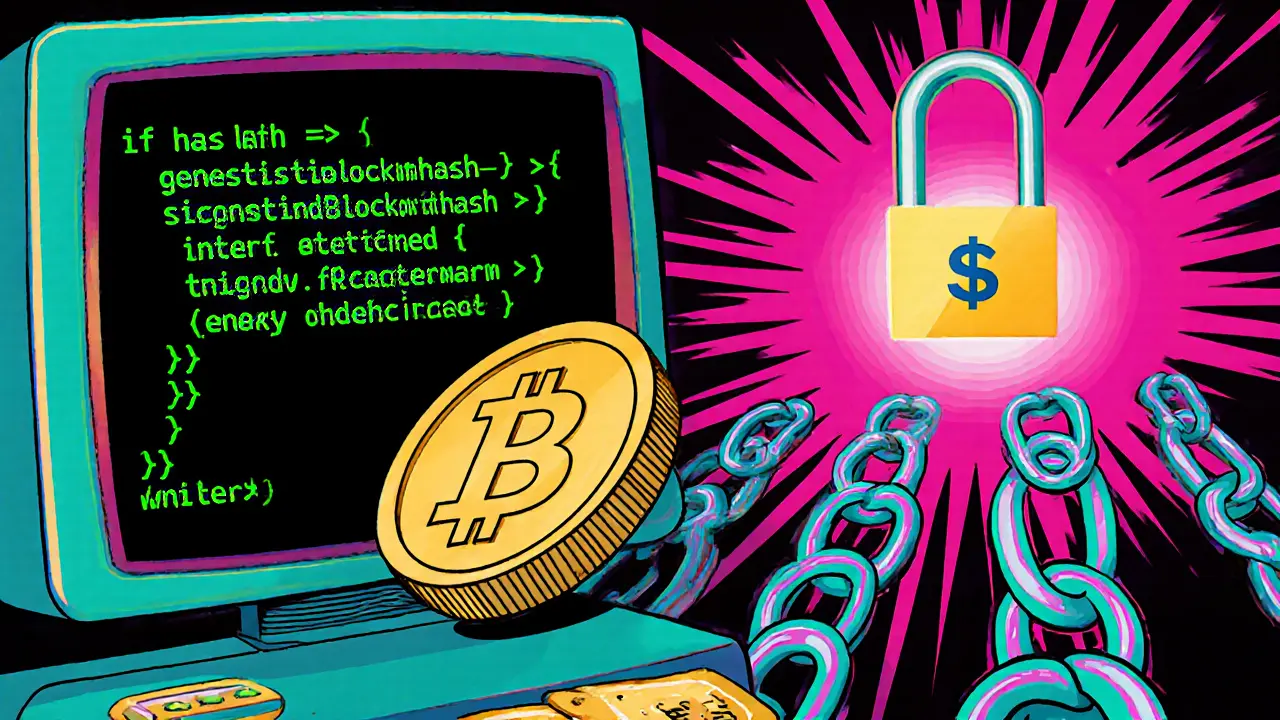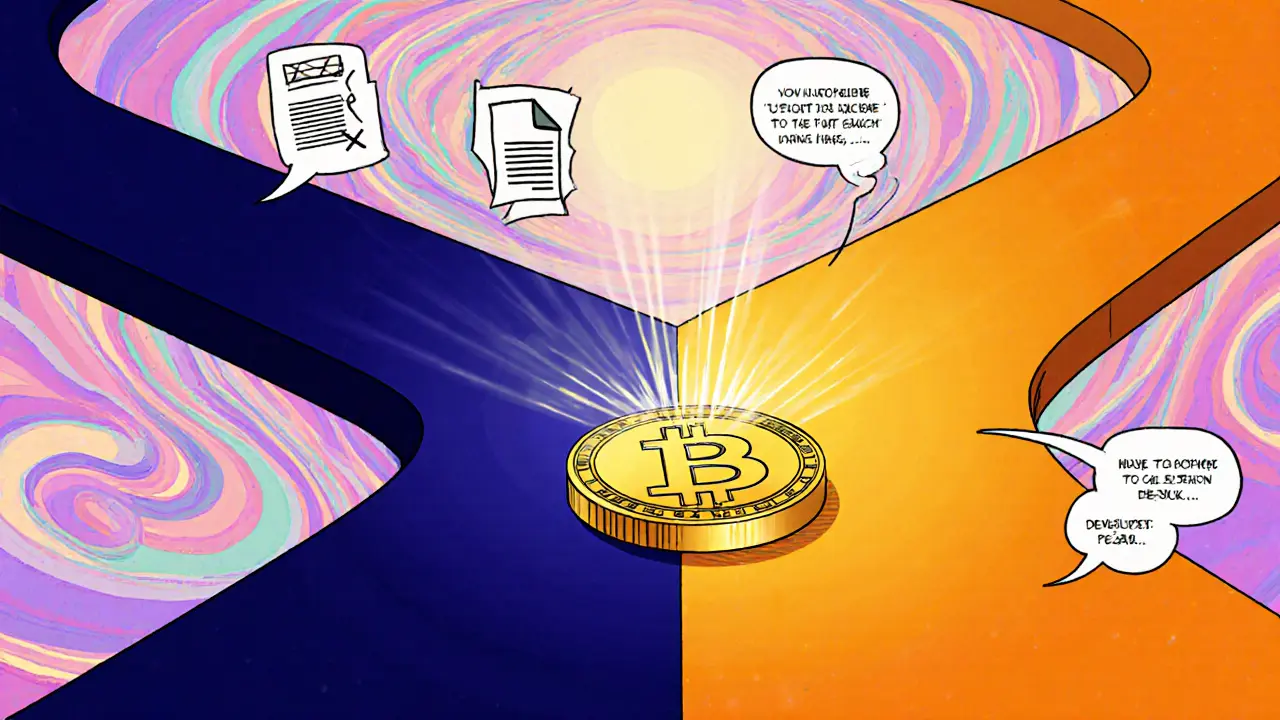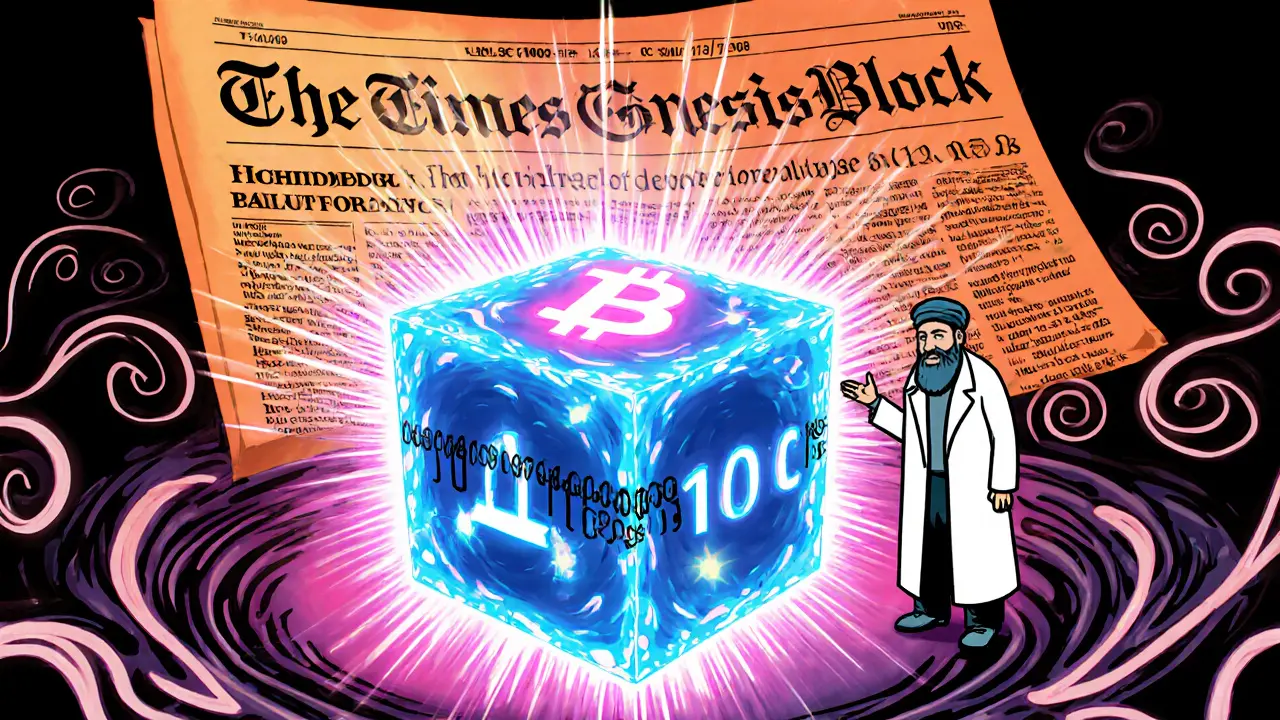Genesis Block Value Calculator
What's 50 BTC Worth Today?
The Bitcoin genesis block contains 50 BTC that can never be spent. Calculate its current value based on today's price.
Result
Current Value of Unspendable 50 BTC
$0.00
This 50 BTC from the genesis block CAN NEVER BE SPENT
When you hear “the first 50 BTC never moved,” you might wonder why those coins are forever stuck. The answer lies in a quirk (or maybe a deliberate statement) baked into Bitcoin’s very first block. Below we break down what the genesis block is, how its reward was created, and why you’ll never see those coins leave the address they’re tied to.
What the Genesis Block Actually Is
Bitcoin genesis block is the very first block in the Bitcoin blockchain, indexed as block 0. It was mined by the mysterious creator Satoshi Nakamoto on January 3, 2009 at 18:15:05 UTC. The block’s hash - 000000000019d6689c085ae165831e934ff763ae46a2a6c172b3f1b60a8ce26f - is hard‑coded into every Bitcoin client, so every node starts its chain from this exact point.
The block also contains a hidden newspaper headline: “The Times 03/Jan/2009 Chancellor on brink of second bailout for banks.” That line works as a timestamp and a political comment, proving the block could not have been created before that date.
The 50 BTC Reward and Its Destination
Like any other block, the genesis block carries a block reward. In 2009 that reward was 50 BTC, sent to the address 1A1zP1eP5QGefi2DMPTfTL5SLmv7DivfNa. Block explorers still show that balance, but the coins are effectively locked.
Why can’t you spend them? The answer is buried in the source code.
The Technical Reason It’s Unspendable
Every Bitcoin block contains a coinbase transaction. For regular blocks the transaction is subject to the same validation rules as any other transaction: the network checks signatures, ensures inputs exist, and verifies that the output is spendable.
In the code that defines the genesis block (found in chainparams.cpp), developers added a special‑case condition:
if (hash == genesisBlockHash) {
// Skip standard validation for the coinbase output
}
This conditional tells the client to ignore the normal spendability check for the genesis block’s output. The result is a "coinbase transaction" that the consensus rules treat as permanently invalid for spending. In other words, the network never considers that 50 BTC part of the usable supply.

Design Intent vs. Accidental Quirk
Even after years of digging, no one can say with certainty whether Satoshi meant for the reward to be locked. Some experts, like Andreas M. Antonopoulos, argue it was a symbolic “digital monument” - a reminder that Bitcoin began with a clean slate. Others, including early Bitcoin‑core developer Gavin Andresen, describe it as a coding oversight that became part of the protocol.
What we do know is that the rule has persisted. No Bitcoin Improvement Proposal (BIP) has ever succeeded in changing the status of the genesis reward because altering it would require a hard‑fork that rewrites the first block hash - something every node would reject as invalid.
Impact on Supply and Economics
The unspendable 50 BTC nudges Bitcoin’s maximum supply down from 21 000 000 to about 20 999 999.9769 BTC. That tiny reduction has no measurable effect on price or market dynamics, but it does show how a single line of code can have a permanent economic consequence.
To put the amount in perspective, when Bitcoin hit its all‑time high of $69 000 in November 2021 those 50 BTC would have been worth roughly $1.5 billion. Yet because they can’t be moved, they have no real market value - they exist purely as a historical artifact.

Developer Implications and Forking the Genesis Block
For most developers building on top of Bitcoin, the genesis block’s special status is a footnote. However, anyone creating a new fork must replicate the hard‑coded genesis block exactly, or else nodes will reject the chain. The Bitcoin Core repository includes the genesis definition in its initial release (v0.1.0) and only updates the surrounding comments - the actual hash and reward stay immutable.
If a team wanted a spendable genesis reward, they would need to change the code, re‑hash the block, and convince every participant to adopt the new rules - essentially building an entirely new cryptocurrency.
Quick Comparison: Genesis Block vs. Regular Blocks
| Feature | Genesis Block (Block 0) | Regular Block |
|---|---|---|
| Block Height | 0 | 1, 2, 3 … |
| Reward Amount (2009) | 50 BTC (unspendable) | 50 BTC (spendable, halves every 210 000 blocks) |
| Coinbase Transaction | Excluded from standard validation | Validated like any other transaction |
| Embedded Message | "The Times 03/Jan/2009…" | None (optional OP_RETURN) |
| Hard‑coded in Clients | Yes - genesis hash and reward are static | No - each new block is computed dynamically |
Frequently Asked Questions
Can the 50 BTC in the genesis block ever be spent?
No. The Bitcoin consensus rules deliberately exclude the genesis block’s coinbase output from validation, making it permanently unspendable unless the entire protocol is replaced.
Why did Satoshi embed a newspaper headline in the genesis block?
The headline timestamps the block (proving it couldn’t be pre‑dated) and serves as a political comment on the 2008 financial crisis.
Does the unspendable reward affect Bitcoin’s total supply?
It reduces the theoretical maximum by 50 BTC, a negligible 0.00024 % of the 21 million cap, so market dynamics stay unchanged.
If a fork wanted to make the genesis coins spendable, what would it need to do?
It would have to rewrite the genesis block definition, change the hash, and convince every node to adopt the new rules - effectively creating a new blockchain.
Are there any proposals to change the genesis block in Bitcoin?
No. All BIP discussions have avoided touching the genesis block because any change would break consensus instantly.

Write a comment